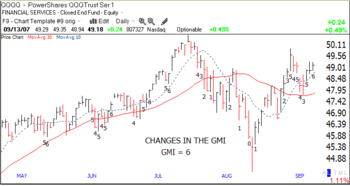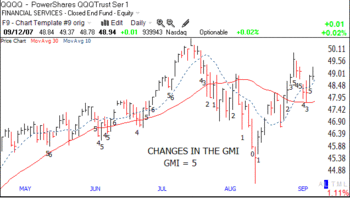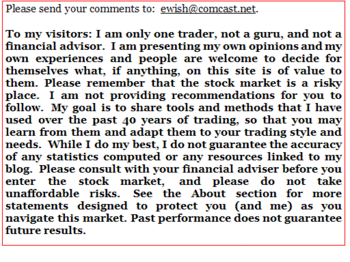The GMI (General Market Index) is now back to 6 for the first time since July 23.  (Click on chart to enlarge.) Thursday was the 10th day in the current QQQQ up-trend. The Worden T2108 indicator is now back to 52, the highest since July 13 and up from a low of 8 on August 15. This pendulum of the market has swung back to positive and does not typically top out until well above 80. The following stocks on the IBD100 lists some time in the past year hit a new high on Thursday:
(Click on chart to enlarge.) Thursday was the 10th day in the current QQQQ up-trend. The Worden T2108 indicator is now back to 52, the highest since July 13 and up from a low of 8 on August 15. This pendulum of the market has swung back to positive and does not typically top out until well above 80. The following stocks on the IBD100 lists some time in the past year hit a new high on Thursday:
BIDU,RIO,VIP,PCLN,CHL,MT,TPX,HANS,CTRP,MTL,BRLI,
FSTR,ICLR,CAM,NVT,DKS,WHQ,OII,LVS,DWSN,SU,HMSY,
FTI,ROS,LAYN,DIOD,RIMM,OIL
This list probably contains many of the market leaders-to-be over the next few months. See my disclaimers below.

